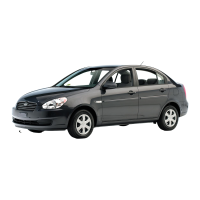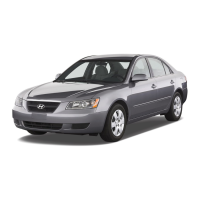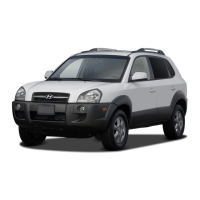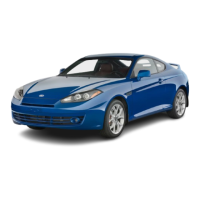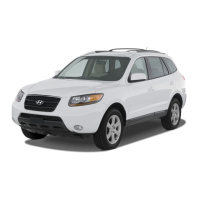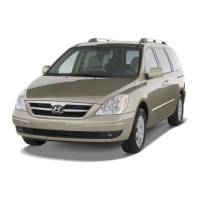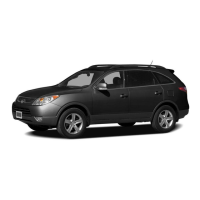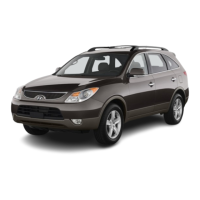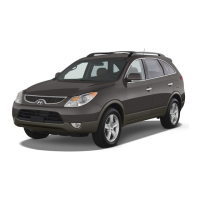
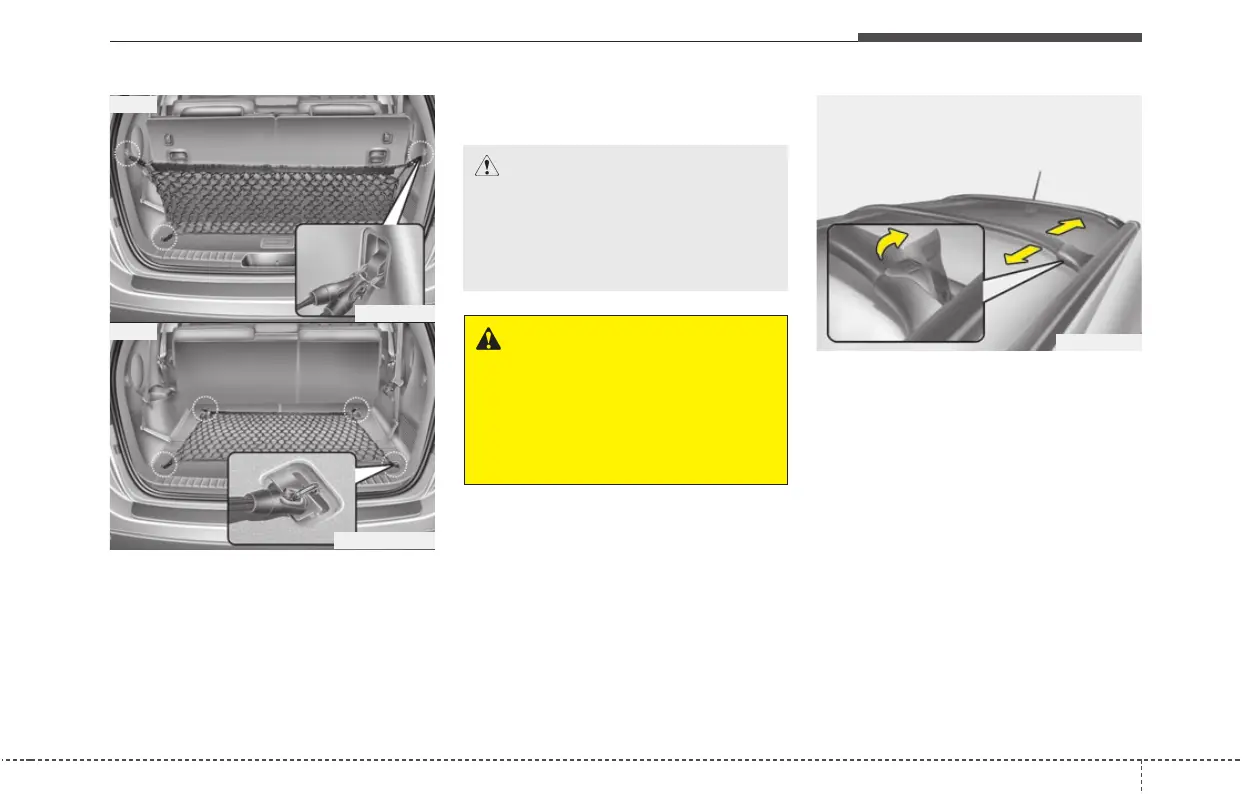 Loading...
Loading...
Do you have a question about the Hyundai 2008 Veracruz and is the answer not in the manual?
| Brand | Hyundai |
|---|---|
| Model | 2008 Veracruz |
| Category | Automobile |
| Language | English |
Explains the manual's layout, warnings, cautions, and notices for optimal understanding.
Details the types of fuel and octane ratings suitable for the vehicle, including precautions.
Provides guidance on operating the vehicle correctly, considering its design characteristics and rollover risk.
Offers simple precautions for the initial 600 miles to enhance vehicle performance, economy, and life.
Explains the meaning of various warning and indicator lights on the instrument cluster for driver awareness.
Identifies and describes major controls and features within the vehicle's interior cabin, with a diagram.
Illustrates and labels the components of the instrument panel, including steering wheel controls and displays.
Provides a diagram of the engine compartment, identifying key components and reservoirs.
Details the adjustments for front, 2nd, and 3rd-row seats, including headrests and lumbar support.
Explains the proper use, restraint system, warnings, and precautions for all seat belts.
Describes the operation, components, warnings, and precautions related to the vehicle's advanced air bag system.
Covers key number recording, key operations, and important warnings related to ignition keys and parts.
Explains the functions of the smart key for locking, unlocking, and starting the vehicle.
Details the operations for locking, unlocking doors, and tailgate using the remote keyless entry system.
Explains how to operate door locks from inside and outside the vehicle, including power door locks and child protection.
Covers opening, closing, and safety precautions related to the tailgate, including emergency release.
Details the operation of power windows, including automatic functions and safety precautions.
Provides instructions for opening and closing the vehicle's hood, along with safety warnings.
Explains how to open and close the fuel filler lid, including refueling precautions and warnings.
Describes how to operate the sunroof (slide, tilt), automatic reversal, and sunshade, with cautions.
Explains how to store and recall driver seat, mirror, and steering wheel positions for personalized settings.
Details how to set the adjustable pedal positions for driver comfort and safety.
Covers power steering operation, tilt steering (manual and electric), and horn usage.
Explains how to adjust the inside and outside rearview mirrors, including day/night adjustments and electric chromic mirror features.
Identifies and explains the various gauges and warning/indicator lights on the instrument cluster.
Covers blade inspection, replacement, and cautions regarding cleaning and handling.
Explains the operation of map lamps, room lamps, luggage lamps, vanity mirror lamps, and door courtesy lamps.
Details how to operate the rear window defroster and front windshield deicer for clear visibility.
Explains the front and rear climate controls, including fan speed, mode selection, and temperature control.
Describes how to use the automatic heating and air conditioning system, including modes and temperature settings.
Covers the use of center console storage, glove box, and other compartments for storing small items.
Explains how to use the cup holders, including precautions for hot liquids and unsecured items.
Explains how to use the cigarette lighter and socket, including cautions on accessory usage.
Explains the use of the power outlet for accessories and cautions about usage.
Describes the AC inverter's function, operation, and safety precautions.
Explains how to set and convert the digital clock display format and shows the outside thermometer.
Explains how to load cargo on the roof rack, reposition crossbars, and secure items.
Describes the roof antenna for AM/FM reception and how to remove/install it.
Explains the function of steering wheel audio controls for safe driving.
Details the operation of the stereo radio system, including buttons and functions.
Explains how to operate the CD player, including disc selection, loading, and playback functions.
Details how to operate the XM satellite radio system, including selectors, displays, and channel searching.
Explains the operation of the CD player/auto changer compatible with MP3/WMA.
Details the operation of the XM satellite radio for the RSE system, including selectors and channel searching.
Explains the operation of the CD player/auto changer for the RSE system, compatible with MP3/WMA.
Covers pre-driving checks like cleaning windows, checking tires, lights, and gauges for safe operation.
Explains the different ignition switch positions (LOCK, ACC, ON, START) and their functions.
Provides detailed instructions on how to start the engine, including with a smart key and jump-starting precautions.
Explains the automatic transaxle operation, gear selection, and warnings for proper use.
Details the AWD system, transfer modes, and conditions for safe operation.
Covers power brakes, disc brake wear indicators, parking brake operation, and warnings for brake failure.
Explains the ABS system, its operation, warnings, and cautions for safe use.
Describes the ESC system's function, operation conditions, and precautions for safe driving.
Provides essential tips for safe braking, including parking brake usage and dealing with wet brakes.
Explains how to set, increase, decrease, temporarily accelerate, and cancel cruise control for highway driving.
Offers driving suggestions to save fuel and reduce maintenance costs, including smooth driving and tire care.
Provides guidance for driving in hazardous conditions like snow, ice, mud, sand, corners, and at night.
Covers preparations for winter driving, including snow tires, tire chains, and anti-freeze.
Offers important tips and safety rules for towing a trailer, including weight limits and hitch information.
Explains how to determine the vehicle's load limit, including capacity weight, seating, cargo, and towing.
Explains the function of the hazard warning flasher and its use in emergency situations.
Provides instructions on what to do if the engine stalls while driving in traffic.
Details the steps to take if a tire goes flat while driving, including safe stopping and tire changing procedures.
Offers troubleshooting steps for when the engine does not start or turns over slowly.
Provides detailed instructions and warnings for jump-starting a vehicle with a dead battery.
Explains what to do if the engine overheats, including checking coolant and drive belts, with warnings.
Explains the TPMS, its indicators, malfunction alerts, and the importance of proper tire maintenance.
Provides step-by-step instructions for changing a tire, including precautions for vehicles with TPMS.
Offers guidelines and recommendations for towing the vehicle, including service options and cautions for AWD vehicles.
Shows a diagram of the engine compartment, identifying major components and reservoirs.
Emphasizes the importance of authorized dealer service and owner maintenance precautions.
Outlines regular checks and inspections to be performed by the owner, including when to stop for fuel.
Provides a detailed schedule for routine maintenance based on mileage and time intervals.
Details maintenance intervals and items that require more frequent attention under severe driving conditions.
Explains the purpose and importance of various scheduled maintenance items.
Provides instructions for checking engine oil level, with warnings about radiator hoses and oil types.
Covers changing coolant, checking coolant level, and warnings about radiator caps and coolant types.
Explains how to check brake fluid level, use specified fluid, and warnings about brake fluid contact and loss.
Details how to check power steering fluid level and hose connections, with cautions about fluid usage.
Explains how to check washer fluid level and provides warnings about fluid usage.
Covers checking parking brake stroke and operation, with warnings about brake wear and usage.
Explains the process for replacing the air cleaner filter.
Details filter inspection and replacement procedures, with cautions about dust and non-genuine parts.
Covers blade inspection, replacement, and cautions regarding cleaning and handling.
Provides instructions and warnings for battery service, recharging, and handling.
Covers tire care, recommended inflation pressures, and warnings about underinflation and overinflation.
Explains the importance of wheel alignment and tire balance, and when they may need adjustment.
Details when and how to replace tires, including warnings about worn tires and recommended sizes.
Explains the types of fuses, their purpose, warnings about replacement, and cautions regarding fuse removal.
Guides on how to check and replace fuses in the instrument panel fuse panel.
Guides on how to check and replace fuses in the engine compartment fuse panel.
Lists the overall dimensions, tread, wheelbase, and other key measurements of the vehicle.
Provides a table listing the wattage for various exterior and interior light bulbs.
Details tire sizes, inflation pressures, wheel lug nut torque, and spare tire information.
Lists the recommended lubricants and fluids for the vehicle, including engine oil and coolant specifications.
Explains the importance of SAE viscosity numbers for engine oil based on temperature.
Explains the purpose of the VIN and where to find it on the vehicle.
Describes the vehicle certification label and its location.
Explains where to find the tire size and recommended inflation pressure label.
Indicates where the engine number is stamped on the engine block.
Provides contact information for Hyundai Motor America Regional Offices for customer inquiries.
Instructs on how to report vehicle safety defects to NHTSA and Hyundai Motor America.
Outlines the binding arbitration agreement for warranty claims and disputes in the USA.

